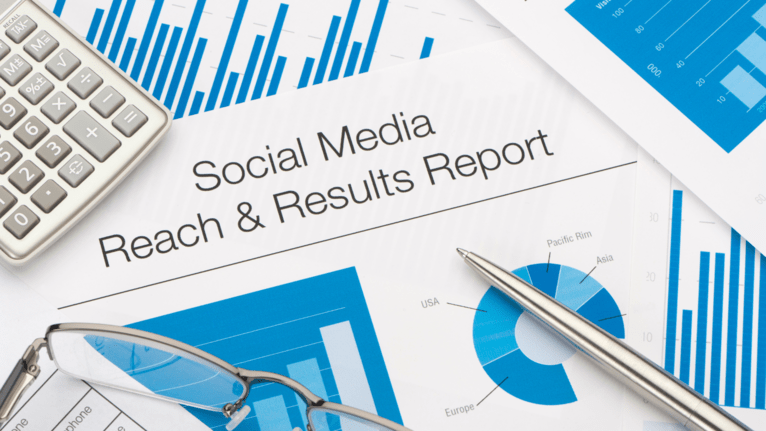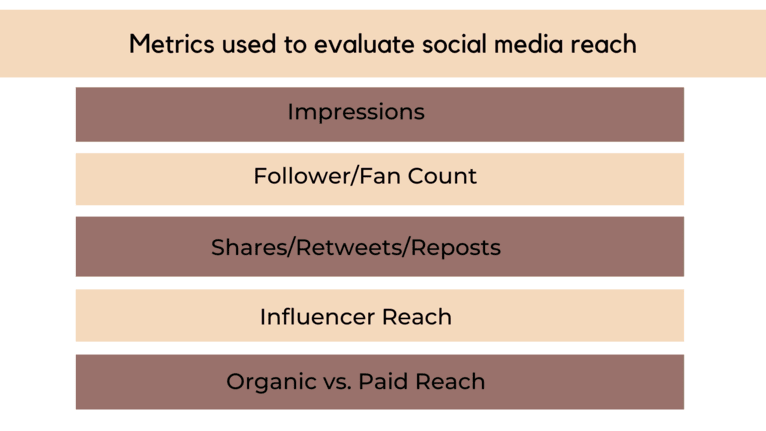Social Media Reach
Social media reach refers to the total number of unique users or accounts who have been exposed to a particular piece of content on a social media platform. It represents the potential audience size or the number of individuals who have had the opportunity to view or engage with a specific post, campaign, or profile.
The concept of reach is important in social media marketing and analytics as it helps measure content's overall impact and visibility. A higher reach indicates that the content has been distributed to a larger audience, potentially increasing brand awareness, generating more impressions, and attracting more potential followers or customers.
What is social media reach?
Social media reach is a vital metric that measures the potential audience size or the number of unique users exposed to your social media content. It plays a crucial role in evaluating the effectiveness of your social media marketing efforts and understanding the impact of your social media presence.
To measure social media reach, you can use analytics tools and platforms that provide insights into the reach metric. These tools enable you to track and analyze data related to your social media posts, engagements, and audience interactions. By monitoring reach, you can determine the success of your marketing campaigns, identify your target audiences, and optimize your social media strategy.
It is essential to differentiate between reach and impressions. While reach refers to the number of unique users who have been exposed to your content, impressions represent the total number of times your content has been displayed, regardless of whether it was viewed or engaged with. For instance, if your content is displayed on a user's screen twice, it counts as two impressions, but the reach remains the same as it is based on unique users.
Viral reach is another type that specifically refers to the number of unique users exposed to your content through viral sharing or organic distribution. This metric indicates the potential for your content to go viral and reach a wider audience beyond your immediate followers.

By measuring reach and other social media metrics, such as engagement rate and conversions, you can evaluate your social media marketing activities' return on investment (ROI). This data-driven approach helps you understand the impact of your social media efforts on brand awareness, customer engagement, and sales prospecting.
To calculate social media reach, you can utilize the reach metric provided by social media analytics tools, which considers factors like the number of followers, shares, retweets, and brand mentions. Additionally, tracking impressions, engagement reach, and non-social reach can provide a comprehensive understanding of how users view and engage with your content across different platforms.
Different types of content, such as blog posts, social media posts, videos, or infographics, may have varying reach based on their format, quality, and relevance to your target audience. It is important to analyze the reach and engagement of each type of content to inform your content strategy and focus on producing content that resonates with your potential customers.
Monitoring tools and social media analytics platforms offer features for social media monitoring, data collection, and reputation management. These tools enable you to track social media conversations, gather insights, and respond to customer care inquiries, enhancing your social media presence and fostering positive customer relationships.
Furthermore, by leveraging social listening and social media monitoring, you can track brand mentions, stay updated on industry trends, and identify opportunities for engagement or content creation. These activities contribute to your overall digital marketing strategy and help establish a strong social media presence.
In conclusion, measuring social media reach is a key aspect of understanding the effectiveness of your social media marketing efforts. By utilizing social media analytics tools, tracking metrics, and analyzing data, you can optimize your social media strategy, engage with your target audience, and achieve your marketing goals. Remember, social media reach is just one of many metrics to track, alongside engagement rate, impressions, conversions, and other key performance indicators, to assess the overall impact of your social media presence.
Metrics used to evaluate social media reach
Understanding social media reach is essential for assessing the effectiveness of social media campaigns, evaluating content performance, and making informed decisions regarding audience targeting, content strategy, and engagement. However, it's important to note that reach alone does not capture the level of engagement or the quality of interactions with the content. Metrics like likes, comments, shares, click-through rates, and conversions provide additional insights into the effectiveness and impact of social media efforts.
Reach can be measured in various ways, depending on the social media platform and the available analytics tools. Some common metrics used to evaluate reach include:
- Impressions
Impressions represent the total number of times a post or content has been displayed on users' screens. It counts every instance of the content being shown, regardless of whether it was viewed or engaged.
- Follower/Fan Count
This metric represents the number of followers or fans who have subscribed to a social media account or page. It indicates the potential reach of future content posted on the account.

- Shares/Retweets/Reposts
When a user shares, retweets, or reposts content, it extends the reach beyond the original creator's audience. Each share exposes the content to new followers, potentially increasing its overall reach.
- Influencer Reach
Influencer reach refers to the potential audience size that an influencer can reach through their social media channels. It is an important brand consideration when collaborating with influencers for promotional activities.
- Organic vs. Paid Reach
Organic reach refers to the number of users who see a post without any paid promotion, while paid reach represents the number of users reached through sponsored posts or advertisements.